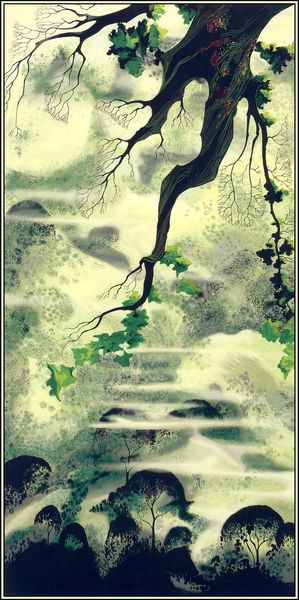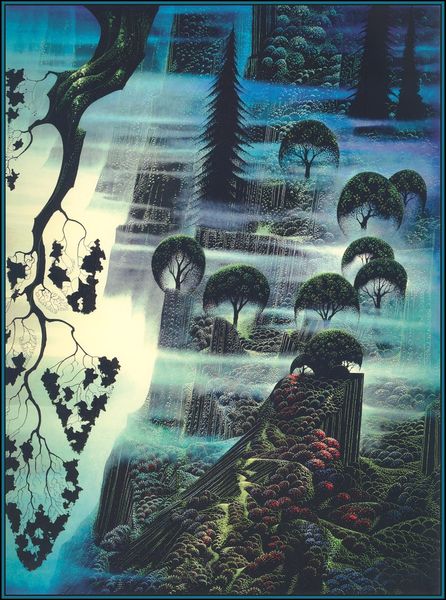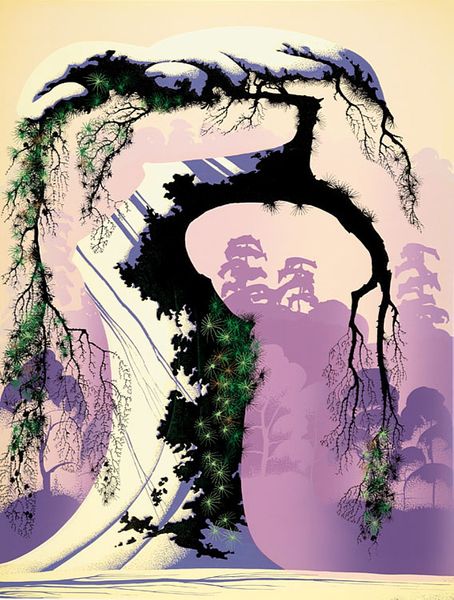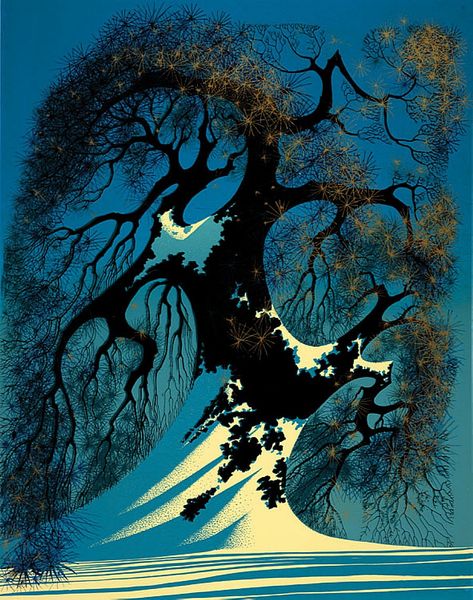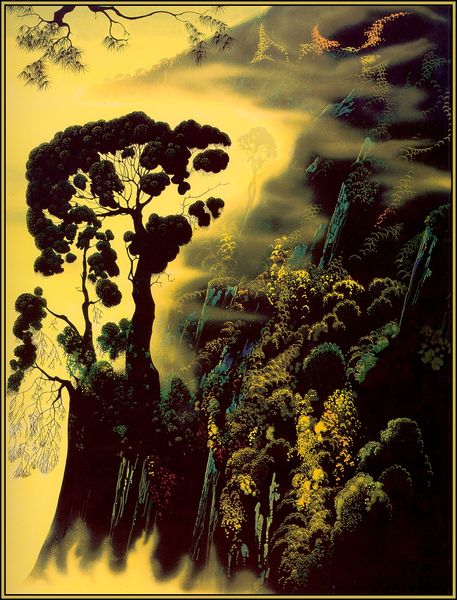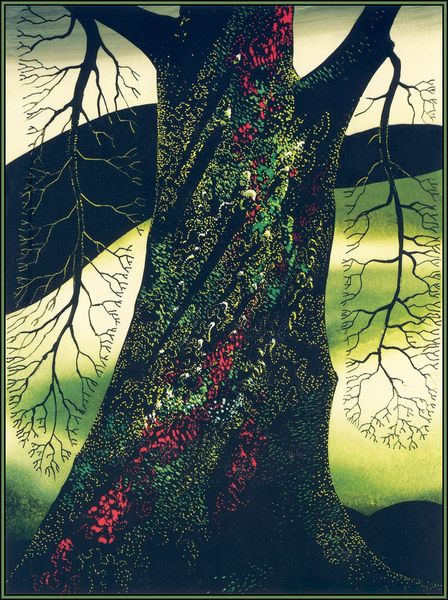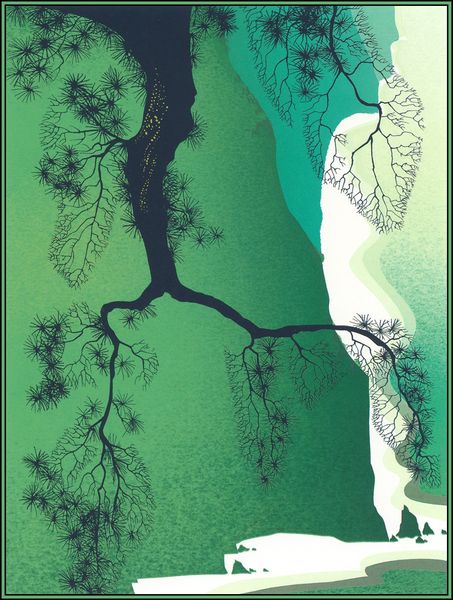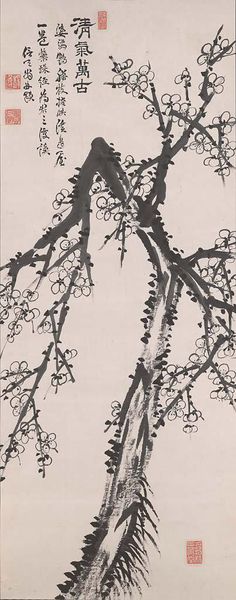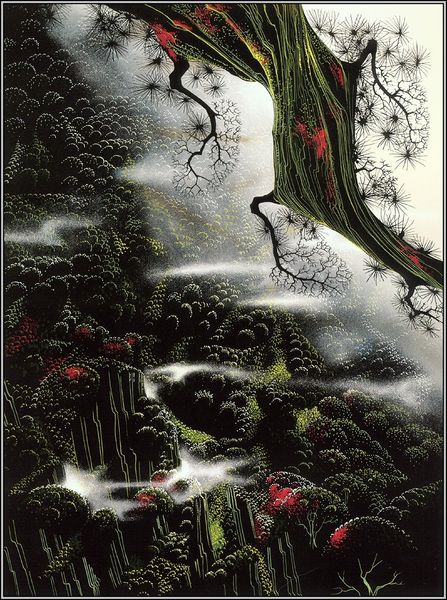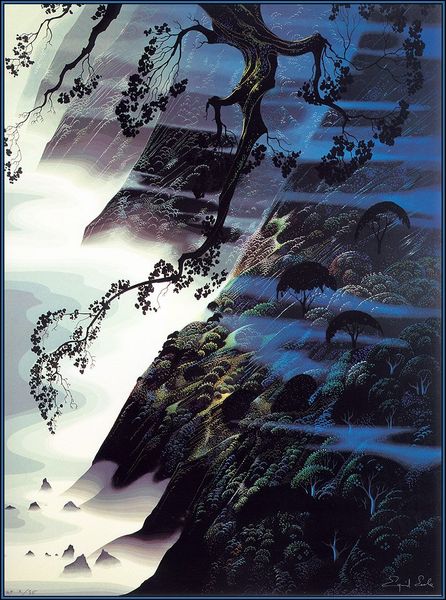
drawing, ink, pencil
#
tree
#
drawing
#
landscape
#
figuration
#
form
#
ink
#
geometric
#
pencil
#
line
Copyright: Eyvind Earle,Fair Use
Editor: This drawing, “Fog Mist” by Eyvind Earle, was created in 1996. The artist used ink and pencil. I’m struck by how the stark black branches contrast against the soft, muted background. What stands out to you? Curator: I'm drawn to the labor involved in creating such a precise, linear work. Think of the repetitive action, the careful control required to render these forms. It transcends mere representation; it becomes a testament to the artist's dedication and the very process of making. How might Earle's materials—the specific ink and pencils he chose—have impacted the final aesthetic? Editor: That’s interesting. I hadn't considered the impact of his tool choices, but it makes sense. Do you see that repetitive use of line as having cultural significance beyond just a stylistic choice? Curator: Absolutely. Consider the post-war period when Earle’s career began. There's a clear relationship to mass production – almost a suggestion of landscape as product. Earle’s rendering almost treats the landscape as an assemblage of parts. Think about how the seemingly 'natural' is carefully constructed and commodified for consumption. Editor: So, by meticulously rendering these lines, is he showing us the labor usually hidden behind idealized landscapes? Curator: Precisely. He exposes the artifice and challenges traditional notions of the sublime in nature. He makes the *making* visible. What do you think of the implications of calling something ‘high art’ when we look at all this repetitive labor? Editor: That definitely makes me question those art historical divisions more deeply. I now see it less as a picturesque scene, and more as a meditation on production. Thanks for opening my eyes to that! Curator: My pleasure. Thinking about the means of production always enriches our understanding of art.
Comments
No comments
Be the first to comment and join the conversation on the ultimate creative platform.

